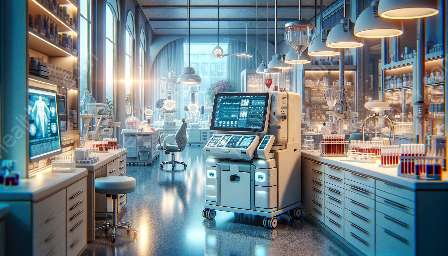Endoscopy equipment, clinical testing equipment, and medical devices have played pivotal roles in revolutionizing modern healthcare. Endoscopy, a minimally invasive diagnostic and treatment procedure, relies on advanced equipment to provide accurate and precise visualization inside the body. This article explores the fascinating world of endoscopy equipment, its compatibility with clinical testing equipment, and the advancements in medical devices that are driving the healthcare industry forward.
Understanding Endoscopy Equipment
Endoscopy equipment encompasses a wide range of instruments and devices designed for visualizing the internal organs and structures of the body. The primary purpose of endoscopy is to diagnose, evaluate, and treat various medical conditions without the need for invasive surgical procedures. Endoscopes, the core component of endoscopy equipment, come in different forms, including flexible, rigid, and capsule endoscopes, each tailored to specific medical applications.
Types of Endoscopes
Rigid Endoscopes: Rigid endoscopes consist of a straight, rigid tube with a lens and a light source at one end. They are commonly used for procedures requiring straight-line access to specific areas of the body, such as arthroscopic surgeries and sinus examinations.
Flexible Endoscopes: Flexible endoscopes feature a flexible insertion tube that allows for easier navigation through the body's natural curves and contours. They are widely used in gastrointestinal endoscopy, bronchoscopy, and urology procedures.
Capsule Endoscopes: Capsule endoscopes are small, pill-sized devices equipped with a miniature camera that can be swallowed by the patient. As they move through the digestive system, they capture images to diagnose gastrointestinal disorders and abnormalities.
Advanced Imaging Technologies
Recent advancements in endoscopy equipment have led to the integration of advanced imaging technologies, such as high-definition (HD) and ultra-high-definition (4K) cameras, narrow-band imaging (NBI), and confocal laser endomicroscopy. These technologies enhance the visualization of anatomical structures and aid in the early detection of abnormalities, thereby improving diagnostic accuracy and patient outcomes.
Compatibility with Clinical Testing Equipment
Endoscopy equipment is closely linked to clinical testing equipment, as both play integral roles in diagnosing and monitoring various medical conditions. Clinical testing equipment encompasses a broad range of instruments and devices used to analyze biological samples, monitor physiological parameters, and conduct diagnostic tests. In the context of endoscopy, clinical testing equipment is essential for obtaining and analyzing tissue and fluid samples collected during endoscopic procedures.
Biopsy Forceps and Imaging Modalities
Biopsy Forceps: Endoscopic biopsy forceps are designed to collect tissue samples from the gastrointestinal tract, respiratory system, and other areas accessible by endoscopy. These samples are then subjected to clinical testing, such as histopathological analysis, to confirm or rule out suspected medical conditions.
Imaging Modalities: Endoscopic imaging modalities, including chromoendoscopy, fluorescence imaging, and virtual chromoendoscopy, facilitate the visualization and characterization of abnormal tissue during endoscopic examinations. When integrated with clinical testing equipment, these imaging modalities provide valuable insights for accurate diagnosis and treatment planning.
Diagnostic Testing and Remote Monitoring
Clinical testing equipment also extends to diagnostic tools that complement endoscopic examinations, such as rapid diagnostic tests for infectious diseases, point-of-care analyzers for on-site laboratory testing, and remote monitoring devices for post-procedural care. These technologies contribute to a comprehensive approach to patient care and enhance the utility of endoscopy in both diagnostic and therapeutic settings.
Advancements in Medical Devices & Equipment
Besides endoscopy and clinical testing equipment, the field of medical devices and equipment has witnessed groundbreaking advancements, transforming the delivery of healthcare services across diverse medical specialties. Innovations in medical devices have significantly influenced the evolution of endoscopy procedures, leading to improved patient outcomes and enhanced procedural efficiency.
Integration of Robotics and AI
The integration of robotics and artificial intelligence (AI) has revolutionized the field of medical devices, enabling the development of robotic-assisted endoscopic platforms and AI-driven diagnostic tools. These technological integrations have augmented the capabilities of endoscopists, allowing for enhanced precision, dexterity, and real-time analytics during endoscopic procedures.
Wireless Connectivity and Telemedicine Solutions
Wireless connectivity and telemedicine solutions have also reshaped the landscape of medical devices, making remote consultations, tele-endoscopy, and telemonitoring of patients feasible. These advancements enhance accessibility to specialized healthcare services and enable efficient collaboration among healthcare professionals, ultimately benefiting patients in remote or underserved areas.
Enhanced Patient Comfort and Safety
Advancements in medical devices prioritize patient comfort and safety, with the development of ergonomically designed endoscopic instruments, enhanced infection control measures, and the incorporation of patient-friendly features in diagnostic and monitoring devices. These efforts aim to optimize the patient experience during endoscopic procedures and improve overall healthcare outcomes.
Conclusion
The continued evolution of endoscopy equipment, its synergy with clinical testing equipment, and the transformative advancements in medical devices collectively contribute to the advancement of modern healthcare. As technology continues to drive innovation in these interconnected fields, healthcare professionals and patients alike can anticipate improved diagnostic accuracy, enhanced procedural efficiency, and better overall patient care.


